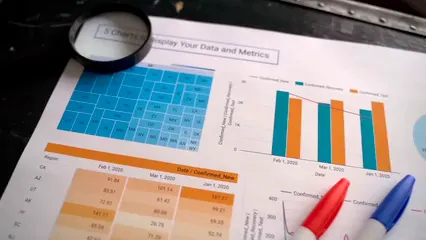Introduction
Statistical inference is the magical art of making predictions about a population based on sample data. Imagine trying to guess how many jellybeans are in a jar, but instead of counting them all, you take a handful and make an educated guess. That’s statistical inference in action! It allows researchers and analysts to draw conclusions and make decisions, transforming data into meaningful insights.
Enter George Casella and Roger Berger, two titans in the field of statistics. Their book, “Statistical Inference,” has become a staple in academia and among practitioners alike. This classic text is revered for its clear explanations and comprehensive coverage of statistical theories. Casella and Berger have woven the fabric of statistical inference together, providing readers with the tools they need to navigate complex data landscapes.
Why is this book so significant? It’s simple! It not only lays down the theoretical foundations of statistical inference but also emphasizes practical applications. The authors have crafted a resource that resonates with both aspiring statisticians and seasoned professionals. In this article, we will explore the life and contributions of Casella and Berger, delve into the contents of their book, and discuss its impact on the field of statistics.
So, grab your favorite snack, and let’s embark on this statistical adventure together! Whether you’re a newbie trying to grasp the basics or a seasoned analyst looking to refresh your knowledge, this guide is designed just for you.

The Authors and Their Contributions
George Casella
George Casella is a name synonymous with statistical excellence. He earned his undergraduate degree at Fordham University and completed his graduate studies at Purdue University. This academic journey laid the groundwork for a stellar career in statistics. He has held notable positions at prestigious institutions like Rutgers University and Cornell University, where he became a beloved professor.
Casella’s research interests are as diverse as a box of chocolates. He has made significant contributions to Monte Carlo methods, model selection, and genomic analysis. His work, particularly in Bayesian methods, has paved the way for advancements in statistical theory. Casella’s accolades are numerous; he was named a Fellow of the American Statistical Association and the Institute of Mathematical Statistics. Additionally, he became a Foreign Member of the Spanish Royal Academy of Sciences in 2009. Talk about a résumé!
Roger L. Berger
Roger Berger’s academic journey is equally impressive. He received his doctorate in statistics from Purdue University and has held various academic positions, including tenures at Florida State University and North Carolina State University. He joined Arizona State University in 2004, where he continues to inspire future statisticians.
Berger’s contributions to statistical education are monumental. He has authored numerous publications, including the widely respected “Statistical Inference.” His expertise spans hypothesis testing, generalized linear models, and statistics education. Like his co-author, Berger has also received several accolades, including being named a Fellow of both the American Statistical Association and the Institute of Mathematical Statistics. Clearly, these two are a dynamic duo in the world of statistics!
In summary, both George Casella and Roger Berger have shaped the field of statistical inference through their research, teaching, and groundbreaking textbook. Their combined expertise has provided countless students and professionals with invaluable insights into the world of statistics. With such remarkable backgrounds, it’s no wonder their book has become a cornerstone in the field.

Overview of “Statistical Inference”
Book Details
“Statistical Inference” is a hallmark text in the field of statistics, crafted by the dynamic duo of George Casella and Roger L. Berger. This book, now in its second edition, is published by Chapman and Hall/CRC, with a publication date of May 23, 2024. The book has an impressive ISBN of 978-1-032-59303-6, ensuring it’s easily identifiable in libraries and bookstores.
Physically, the book spans 565 pages, measuring 178 x 254 mm. This hardcover edition is not just a feast for the mind but also a treat for the eyes, with its clean layout and clear typography making it easy to read. The text is designed for both serious students and practicing statisticians, serving as a bridge between theoretical concepts and practical applications.

Content Structure
The contents of “Statistical Inference” are thoughtfully organized into thirteen chapters, each building upon the last to enhance the reader’s understanding of statistical concepts. Let’s break down what each chapter offers:
1. Probability Theory: The foundation of statistical inference begins here. The chapter introduces key concepts such as sample spaces, events, and probability measures, setting the stage for more advanced topics.
2. Transformations and Expectations: This chapter dives into how transformations of random variables affect their distributions. It also covers the expected values, which are central to many statistical principles.
3. Common Families of Distributions: Here, readers will encounter essential probability distributions like the normal, binomial, and Poisson distributions. Understanding these distributions is crucial for performing statistical inference. Statistical distribution relevant for agriculture provides more insights into different types of distributions.
Understanding different types of distributions is crucial for effective statistical analysis. Statistical distribution relevant for agriculture can provide valuable insights.
4. Multiple Random Variables: This chapter expands on the concepts from earlier sections by introducing joint distributions and the relationships between multiple random variables. It’s where things start to get interesting!
5. Properties of a Random Sample: A solid understanding of how samples behave is vital. This chapter discusses sampling distributions, the Central Limit Theorem, and how they inform inference.
6. Principles of Data Reduction: In this chapter, the focus shifts to methods like sufficiency and completeness, which help simplify complex data while retaining essential information.
7. Point Estimation: This chapter introduces various methods for estimating population parameters. Readers learn about unbiased estimators and the criteria for optimality.
8. Hypothesis Testing: A critical concept in statistics, hypothesis testing involves making decisions based on sample data. This chapter covers test statistics, Type I and II errors, and power analysis. For a deeper dive, check out the statistics hypothesis testing cheat sheet.
Understanding hypothesis testing is essential for making informed decisions based on data. The statistics hypothesis testing cheat sheet offers valuable insights.
9. Interval Estimation: Following hypothesis testing, this chapter dives into confidence intervals. It explains how to construct and interpret these intervals, providing a range of plausible values for population parameters.
10. Asymptotic Evaluations: This chapter discusses the behavior of estimators and test statistics as sample sizes increase. It introduces concepts like consistency and asymptotic normality.
11. Analysis of Variance and Regression: A key chapter for practitioners, it covers ANOVA techniques for comparing means across groups and regression analysis for modeling relationships between variables. For further reading on regression, consider “Practical Statistics for Data Scientists.”
12. Regression Models: Building on the previous chapter, this section delves deeper into regression, discussing linear and nonlinear models and their applications.
13. Computer Algebra: The final chapter emphasizes modern computational techniques in statistics. It introduces computer algebra systems and their utility in statistical analysis.
Each chapter is packed with examples and exercises, ensuring that readers not only learn the theory but also how to apply it effectively. This structure makes “Statistical Inference” a comprehensive resource for anyone looking to master the art and science of statistical inference. Whether you’re a student or a seasoned professional, this book is designed to guide you through the complexities and nuances of statistics with clarity and wit.

Key Concepts in Statistical Inference
Probability Theory
Probability theory is the backbone of statistical inference. It provides a framework for quantifying uncertainty. Understanding key concepts like sample spaces and events is crucial.
A sample space is the set of all possible outcomes. Events are subsets of the sample space, representing outcomes of interest. Probability measures assign a numerical value to these events, indicating the likelihood of occurrence. Key terms include:
- Random Variable: A variable whose values depend on the outcomes of a random phenomenon.
- Distribution: Defines how probabilities are assigned to different values of a random variable.
- Expectation: The average value of a random variable, providing a measure of central tendency.
These foundational concepts allow statisticians to make informed conclusions from data. To delve deeper into these ideas, consider checking out “The Art of Statistics: Learning from Data.”

Estimation
Estimation is a vital part of statistical inference. It involves estimating population parameters based on sample data. There are two main types: point estimation and interval estimation.
- Point Estimation: Provides a single value as an estimate of a population parameter. For example, using the sample mean to estimate the population mean.
- Interval Estimation: Offers a range of values, known as a confidence interval. For instance, a 95% confidence interval for a population mean indicates where the true mean likely falls. For details on calculating test statistics for confidence intervals, see how to calculate test statistic for confidence interval ti84.
Interval estimation provides a clearer picture of uncertainty in statistics. For more on this topic, refer to how to calculate test statistic for confidence interval ti84.
In practice, point estimates are useful for quick assessments, while interval estimates provide a clearer picture of uncertainty. If you’re looking for a great resource to help with data analysis, check out “Data Science for Business.”
Hypothesis Testing
Hypothesis testing is a method for making decisions based on data. It assesses the validity of a claim or hypothesis about a population parameter.
Key concepts include:
- Null Hypothesis (H0): The hypothesis being tested, often suggesting no effect or no difference.
- Alternative Hypothesis (H1): Indicates the presence of an effect or difference.
- Type I Error: Rejecting a true null hypothesis, also known as a false positive.
- Type II Error: Failing to reject a false null hypothesis, known as a false negative.
- Power of a Test: The probability of correctly rejecting a false null hypothesis.
- p-value: The probability of obtaining test results at least as extreme as the observed results, assuming the null hypothesis is true.
Understanding these concepts helps researchers make informed decisions based on statistical evidence. For more insights, consider reading “Naked Statistics: Stripping the Dread from the Data.”

Regression Analysis
Regression analysis is essential for modeling relationships between variables. It helps in predicting outcomes and understanding dependencies.
- Simple Regression: Involves one dependent variable and one independent variable. For example, predicting weight based on height.
- Multiple Regression: Involves multiple independent variables. It allows for more complex relationships, such as predicting house prices based on various factors like size, location, and age.
Regression analysis provides a powerful tool for data interpretation and decision-making. If you’re interested in enhancing your R programming skills, check out “R for Data Science.”

Asymptotic Theory
Asymptotic theory examines the behavior of statistical estimators as sample sizes grow. It helps assess the properties of estimators, providing insights into their reliability.
- Consistency: An estimator is consistent if it converges in probability to the true parameter as the sample size increases.
- Asymptotic Normality: Indicates that the distribution of an estimator approaches a normal distribution as the sample size increases.
Understanding these concepts is critical for evaluating the performance of statistical methods, especially in large samples. For those interested in diving deeper into data mining, consider exploring “Data Mining: Concepts and Techniques.”

Practical Applications of Statistical Inference
Statistical inference is not just a concept confined to textbooks; it’s a practical tool applied across various fields. From economics to biology and social sciences, its methodologies have transformed decision-making processes. Let’s take a closer look at how statistical inference, particularly the techniques outlined by Casella and Berger, plays a crucial role in these domains.
In economics, statistical inference is like the secret ingredient in a recipe for success. Economists often rely on sample data to make predictions about broader economic trends. For instance, consider a scenario where an economist wants to understand consumer spending behavior. By analyzing a sample of consumer data, they can infer patterns and trends that help predict future spending. Casella and Berger’s methodologies, such as hypothesis testing and confidence intervals, provide the backbone for these analyses. A well-constructed confidence interval can indicate the range within which the true mean of spending lies, enabling economists to make informed policy recommendations.
Moving to the biological sciences, statistical inference is a game changer. Researchers often face the challenge of understanding complex biological systems with limited data. For example, in clinical trials, researchers use statistical inference to determine the effectiveness of new drugs. They analyze sample data from trial participants to draw conclusions about the entire population. The methodologies outlined by Casella and Berger allow for the rigorous testing of hypotheses regarding drug efficacy and safety. By using these methods, researchers can confidently report whether a treatment works, guiding healthcare decisions that affect countless lives. If you’re interested in the intersection of data and healthcare, “Data Science for Dummies” might be an excellent resource for you.
The social sciences also benefit immensely from statistical inference. Social scientists analyze survey data to understand public opinion on various issues. By applying techniques from Casella and Berger’s book, they can draw meaningful conclusions about societal trends. Consider a sociologist studying the impact of education on income levels. By collecting data from a sample of individuals, they can infer broader trends regarding education’s role in economic success. Statistical inference helps them account for variability and uncertainty, leading to more robust conclusions.
Take, for example, a recent study on the effects of remote work on productivity. Researchers collected data from various companies before and after the shift to remote work. Using statistical inference, they analyzed the productivity levels of employees in a sample and compared them to national averages. The results were telling: many organizations saw a significant increase in productivity, leading to a wave of companies adopting flexible work policies. This is a perfect illustration of how statistical inference shapes real-world decisions based on data analysis.
In summary, statistical inference serves as a vital tool across disciplines. By employing the methodologies developed by Casella and Berger, professionals can make informed decisions backed by data. Whether in economics, biology, or social sciences, the ability to infer trends and patterns from sample data is indispensable for advancing knowledge and improving practices. These applications not only showcase the versatility of statistical inference but also highlight its ongoing importance in our data-driven world.

Reviews and Reception
“Statistical Inference” by Casella and Berger has garnered widespread acclaim from both students and professionals alike. The book is frequently praised for its clarity, comprehensive coverage, and usability. Many students appreciate the way complex concepts are presented in an accessible manner, making it easier to grasp intricate statistical theories.
One student review highlighted the book’s engaging writing style, noting, “It builds on essential topics gently, creating a solid understanding.” This sentiment is echoed by professionals who find the text to be a valuable reference throughout their careers. The practical examples included in the book resonate well with readers, allowing them to see the real-world applications of statistical inference. If you’re curious about how to effectively visualize your data, consider exploring “Data Visualization: A Practical Introduction.”
In academic circles, this textbook has established itself as a cornerstone in graduate statistics courses. It is often recommended as essential reading for anyone venturing into the field of statistics. Instructors appreciate its structured approach, which encourages a solid foundation in statistical theory. This foundation is crucial for students planning to pursue advanced studies.
The book’s standing is reflected in its consistent use in universities worldwide. Many professors integrate it into their curricula, reinforcing its role as a go-to resource. The combination of rigorous theoretical grounding and practical applications makes it a favorite among educators.
Moreover, the reception extends beyond academia. Professionals in fields such as economics, biology, and social sciences frequently refer to “Statistical Inference” for its practical insights. The methodologies discussed, including hypothesis testing and confidence intervals, are widely applicable, making the book relevant across various disciplines.
In summary, “Statistical Inference” by Casella and Berger is not just a textbook; it’s a beloved resource that continues to shape the field of statistics. Its clarity, comprehensiveness, and practical approach have earned it high praise from students and professionals alike, securing its place in academic and professional settings for years to come.

Conclusion
Statistical inference is more than a collection of techniques; it is the very foundation of data-driven decision-making. The work of George Casella and Roger Berger has profoundly shaped this critical field. Their book, “Statistical Inference,” serves as a cornerstone for understanding statistical theory and practice. By bridging probability and statistical methods, they have crafted a resource that resonates with students, researchers, and practitioners alike.
Casella and Berger’s contributions go beyond mere academic achievement. Their insights have paved the way for generations of statisticians who seek to understand the complexities of data analysis. Through clear explanations and practical applications, they have demystified seemingly daunting concepts. This has empowered countless individuals to apply statistical methods effectively in their own work.
The impact of their work is visible in various domains, from economics to healthcare. Researchers utilize their methodologies to draw meaningful conclusions from data, helping to inform policy and improve outcomes. The book has become a staple in graduate programs, guiding future statisticians through the intricacies of inference. It’s no wonder that their work continues to inspire curiosity and innovation in the statistical community.
For anyone looking to deepen their understanding of statistical theory, “Statistical Inference” is a must-read. It offers a comprehensive exploration of essential topics, from hypothesis testing to regression analysis. Dive into the wealth of knowledge provided by Casella and Berger, and you might just discover new ways to approach your own data challenges. Whether you’re a student or a seasoned professional, this book provides the tools you need to tackle statistical problems with confidence. For those looking for additional resources, check out “The Elements of Statistical Learning.”

FAQs
Please let us know what you think about our content by leaving a comment down below!
Thank you for reading till here 🙂
All images from Pexels




